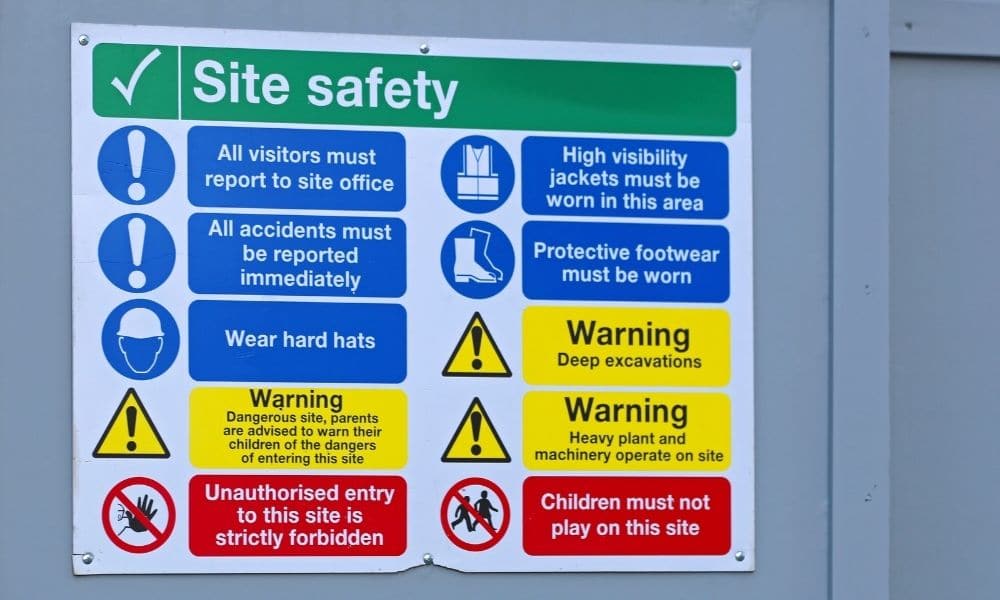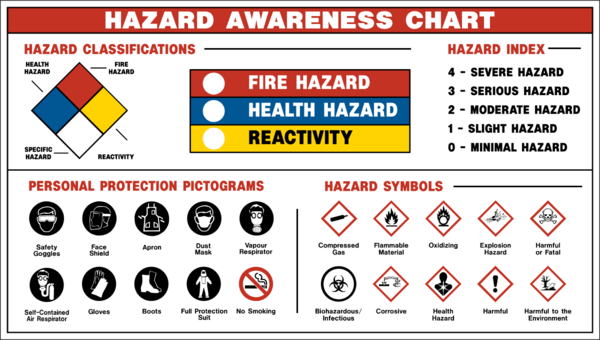5 Tips for Effective Workplace Health and Safety Training for Employees
Workplace health and safety is a global concern. Research done by the International Labour Organisation (ILO) shows that approximately 2.3 million people globally succumb to work-related accidents and diseases annually. Another study shows that 81% of preventable work-related accidents are caused by lack of planning and failure to assess risks.
These realities highlight the importance of workplace health and safety training. A well-developed workplace health and safety training program helps you identify safety risks and plan the staff training necessary to reduce preventable incidents.
This article outlines five tips that will help you create an effective workplace health and safety training program for your staff. Keep the unique needs and challenges of your organisation in mind while reading these tips.
1. Determine Health and Safety Requirements
Workplace health and safety training works best when it’s applied to the health and safety gaps in your organisation. Some key considerations include:
Hazard Assessment: The hazard assessment process allows you to identify all your workplace hazards, assess the risks presented by those hazards, and apply hazard controls to manage those risks. It’s best to hire an expert in Job Hazard Analysis (JHA) to help you conduct an accurate hazard assessment.
Company Size: Your company’s size will determine how your training should be structured. You may need to group your employees and provide ongoing training based on these groups. Or your team may be small enough to provide ongoing training to everyone in one group.
Individual Workplace Operations and Exposures: It’s important to document the hazard exposures that impact each employee’s roles. Documenting how these exposures impact workplace operations will increase awareness among staff and allow you to reinforce knowledge in your training program.
Personnel Capabilities: Carefully assess the skill level and workplace safety knowledge of each employee. Your assessment will help you include content in your workplace health and safety training program that’s at a suitable technical level for your team.
Available Resources: Assess whether you currently have the physical and human resources needed to address your workplace hazards. Although human error is one of the leading causes of work-related accidents, poor equipment maintenance and other property, plant, and equipment (PPE) specific issues also cause workplace accidents. That’s why there needs to be a balance between employee training and actively correcting PPE issues.
Compliance: Review the health and safety laws that govern your country, such as Jamaica’s Occupational Health and Safety Act. Your training program should be designed to help you and your team remain compliant with these laws.
2. Document Workplace Safety Policies and Procedures
The health and safety requirements you’ve identified will help you develop and document workplace safety policies and procedures. All of your employees should have copies of this document. New hires should also be guided through the policy during their onboarding.
Workplace safety policy documents are usually unappealing to read. They’re bulky, wordy, and low on an employee’s list of priorities. Chances are that your employees won’t read the document.
That’s why reinforcement is important. You can do this reinforcement in two ways. First, prominently display signs throughout the workplace that use diagrams to summarise key workplace safety procedures. Here’s an example of a workplace safety sign design.

Ensure your safety signs use the correct symbols. Some examples of symbols related to workplace safety are shown in the diagram below.

Second, online training through micro-learning helps reinforce knowledge. You can create courses based on your health and safety policy and upload them to your learning management system (LMS) for your employees to access.
3. Ensure Your Training Content is at a Suitable Technical Level
Workplace health and safety training should be given to your employees based on their job roles. For instance, an employee who works with machinery everyday would get more technical training than someone who has a customer-facing role.
Follow the S-O-U-N-D principle when choosing training content for your workplace health and safety training program.
S – Specific
Training should be specific to your employee’s skill level and job roles. For instance, you shouldn’t group interns and experienced machine operators together. Interns are novices and should be trained accordingly. Experienced machine operators should be reminded of general safety principles but should also get training that helps them keep their skills relevant and up-to-date.
O – Ongoing
You want training content and modalities that help you provide ongoing health and safety training. Hybrid training is a good middle ground that allows you to experience the benefits of in-person and online training.
For instance, you can host in-person safety workshops that allow employees to role play and participate in experiential learning. Online courses and tests can be used to reinforce what was taught in these workshops. After course completion, you can issue certificates to your employees. A learning management system will help you manage all of this and more.
U – Unbiased
Your training shouldn’t favour one set of employees over another. All employees should feel included and training should be structured to accommodate multiple learning styles.
N – New and Relevant
Keep on top of industry trends. New techniques and processes are continuously emerging that make business processes more efficient. Sometimes, these new techniques and processes require new equipment and skillsets. Your training program should accommodate consistent updates that will keep your team’s skills relevant.
D – Direct
Workplace health and safety training should be directed at what’s working and not working. First, it’s important to continuously assess workplace processes to discover what’s working well. It’s through understanding what’s working well that you can update your training program to teach your company’s best practices to new hires.
Second, direct feedback from your employees will help you understand the gaps in your training program. Send surveys. Speak with managers. Talk with on-the-ground staff. Pay attention to their feedback and adjust your training accordingly.
4. Provide Opportunities for Practical Application
Workplace health and safety isn’t theoretical. It requires employees doing what’s necessary each day to create a safe work environment.
Your employees can score well on tests within your training program. But the real proof of their learning is in how they apply what they’ve learned. Workplace health and safety training must be practical.
Here are some tips that can help you create a practical hybrid workplace health and safety training program.
Bring training groups together to discuss what they’re learning in online courses and how they’re applying this new knowledge.
Create in-person workshops where employees can role play or participate in simulations.
Provide less experienced employees with more experienced mentors who can provide on-the-job training.
5. Keep Your Employees at the Heart of What You’re Doing
One of the biggest mistakes made with employee training programs is using a top-down approach. Yes, it’s important to ensure your training aligns with the objectives set by the C-Suite. But your employees are the people who are going to be impacted the most.
Do site visits to learn more about each employee’s job. Pay attention to what they do on a daily basis, how they feel, and aspects of the company’s culture that threaten their mental and physical wellbeing. Use your insights to not only develop training programs that meet their needs, but also create a workplace where people enjoy what they do.
Create an Effective Workplace Health and Safety Training Program for Your Staff
The safety and wellbeing of staff is a big part of your responsibility as an HR manager. That’s why workplace health and safety training shouldn’t be cookie-cutter; it should be based on your organisation’s needs, culture, and people. Keeping these three things in mind will help you create a memorable health and safety training program for employees.
One on One offers ready-made health and safety training courses, and content development services. Our ready-made courses will provide your staff with the fundamental knowledge they need to create a safe workplace. Our content development team will transform your workplace safety policies and procedures into bite-sized, engaging, and interactive courses your team will love.
Book a demo to learn more about how we can help you create an effective workplace health and safety training program.

